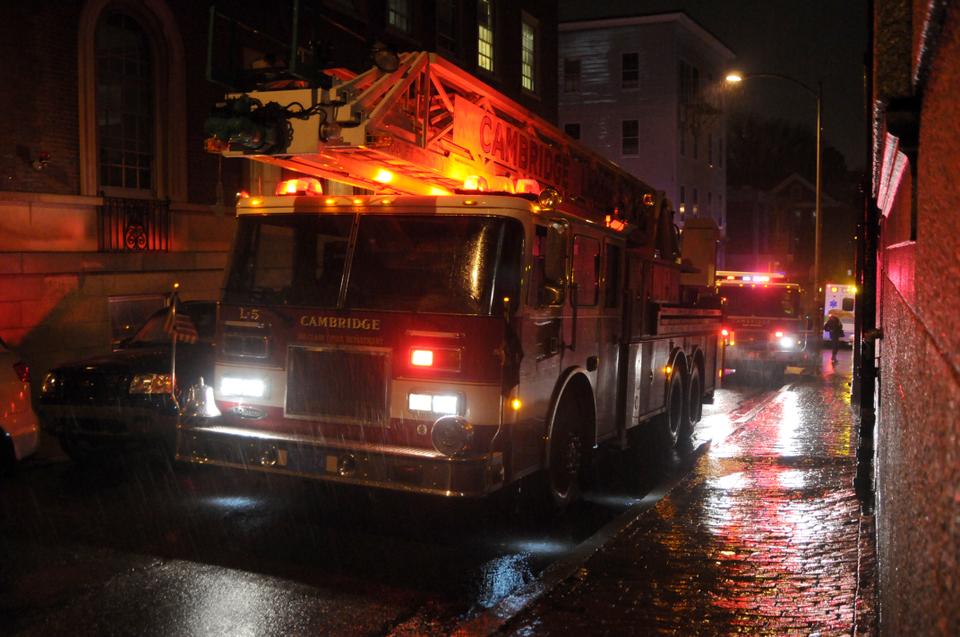
News
Summers Will Not Finish Semester of Teaching as Harvard Investigates Epstein Ties

News
Harvard College Students Report Favoring Divestment from Israel in HUA Survey

News
‘He Should Resign’: Harvard Undergrads Take Hard Line Against Summers Over Epstein Scandal

News
Harvard To Launch New Investigation Into Epstein’s Ties to Summers, Other University Affiliates

News
Harvard Students To Vote on Divestment From Israel in Inaugural HUA Election Survey
Gas Leak Evacuates Adams House Residents

A carbon monoxide leak in Adams House forced the evacuation of residents of Russell Hall and Westmorly Court last night.
The carbon monoxide alarm, which was likely set off after wind and rain caused a downdraft through a chimney, resulted in the odorless gas leaking into two rooms in C-entryway, Adams House Master John G. “Sean” Palfrey ’67 said at 10:30 p.m. yesterday.
Students and tutors were allowed to return to their rooms at around 9:45 p.m., just in time for Carpe Noctum, the Adams stein club. As a precaution, residents in the two rooms were asked to sleep elsewhere, though they were allowed to collect their belongings.
As emergency officials investigated the source of the gas, Harvard University Police Department, Cambridge Police Department, and Cambridge Fire Department vehicles stood guard on and around Plympton Street. Securitas employees kept passers-by away from the sidewalk where the buildings are located.
Some displaced students huddled in Randolph Hall, located across the street, waiting for an indication as to when they would be allowed back to their rooms.
One of those students, Crystal Chang ’10, said a security official told her, “Don’t you see the alarms? You can’t be in the House anymore.”
A handful also sought refuge in the Quincy House dining hall, which had been designated as a meeting point by Adams House Allston Burr Resident Dean Sharon L. Howell.
Howell said at 9:15 p.m. last night that fire department officials were going room by room in C-entryway to pinpoint the leak and make sure students had evacuated.
Emergency officials isolated the leak and opened a window for ventilation, causing a quick restoration to normal carbon monoxide levels.
“Literally within a matter of minutes, the level of carbon monoxide was found well below any threshold of concern,” Palfrey said.
An investigation will take place today to confirm the exact source of carbon monoxide and the cause of the leak.
—Staff writer Naveen N. Srivatsa can be reached at srivatsa@fas.harvard.edu.
Want to keep up with breaking news? Subscribe to our email newsletter.
